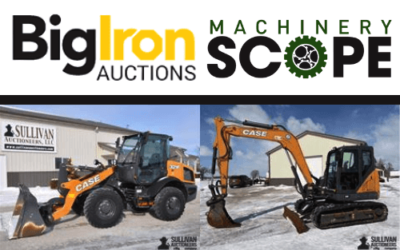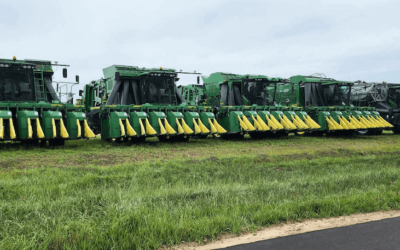On our family farm, harvest is a fun time of the year. If you were to pick a favorite place to be, it would have to be in the combine.
For our parts and service departments at the dealership, you better be going after those combines for the inspection programs. They were fantastic for helping to build a thriving aftermarket business in the dealership. (P.S. Our extended warranty solutions can help lock in those business opportunities for your dealership).
As a used equipment manager having to constantly try to solve the riddle of moving used combines profitably (or at least losing as little money as possible), I felt like I was banging my head on the wall… Finance programs, extended warranty, extra sales incentives, auctions, and more. Everyone who sold a used combine received a gold star (attaboy) and if you sold two, you were a candidate for employee of the month. It occupied my mind constantly and all the cards were on the table to move used combines. This is in part, why we started the Machinery Scope business in 2013. We wanted to close the risk and information gap to serve as a tool for moving (in particular) 5 to 15-year-old combines. These were the machines that were the biggest challenge in the trade cycle. It didn’t feel like we had the resources or dedication to help solve this problem, so Machinery Scope went to work on building out some of the tools, resources, and relationships that would help alleviate this burden.
What are the considerations for how aggressive dealers may (or may not) want to be on moving used combines?
- The data suggests the overall number of combines for sale in the marketplace is down by about 33% versus the prior two-year average. It’s down, but not nearly as much as just about every other category of farm equipment. However, it is important to put an asterisk to this. I have talked with several dealer organizations who are reluctant to list all their used combines, particularly those tied to factory delivery dates that are late summer / early fall. It’s unlikely the unlisted number of combines makes up the reduced quantity available, but it’s still worth considering. To quote a dealer executive, “We have a shit ton of used combines that are not listed right now because we aren’t confident in the timing of factory deliveries.”
- What are the holding costs for combines? Floor plan interest rates are up approximately 2% year over year. A dealer organization sitting on just $10M of harvest inventory already has $200,000 taken out of the bottom line just to carry the stuff. If you have a certain target for total inventory and you look at your total inventory like a fund manager, you constantly rebalance the portfolio with higher potential items.
- What is the risk vs. reward on combines? Hold out to try to get 2% to 3% more margin? Or risk a 10% to 15% slide in values like we saw from 2013 to 2015? Of course, we can be our own worst enemy and look back at the money that may have been left on the table, but how often have you regretted selling combines for even “low” retail? The sales I tended to regret were the deals I walked away from only to have that machine end up on an auction 6 months later.
- How long does the bull run in agriculture commodities last? It’s hard to know, but I would encourage you to check out an article titled “Are Long-Run Prices Still $4 for Corn, $10 for Soybeans, and $5.50 for Wheat?” from the farmdoc daily (12):79, Department of Agricultural and Consumer Economics, the University of Illinois at Urbana-Champaign, May 31, 2022.
- Do you have enough used combine buyers committed to buying from your dealership to support your new market share initiatives on an ongoing basis? If you have historically relied on some amount of auctioning and creative liquidations, is the long-run outlook any different?
For the first time in my working career, I am not in the dealership. I miss working with our sales team, but I am grateful for being able to work alongside the team we built at Machinery Scope daily (or at least during daytime hours) trying to solve this challenge. Hopefully, everyone can seize the opportunity (Carpe Diem!) to move through as many used combines as possible.
No matter your thoughts or situation on combine inventory, Machinery Scope is committed to providing value to you and your customers through our finance solutions and extended service plans (AKA extended warranty) for combines and more. We are always excited to share ideas and have a dialogue about how we can, as an independent company, be a resource and assist in helping you drive higher returns on your assets. Feel free to reach out to me if you have any feedback.
-Jacob Bryce
Jake Bryce, Founder of Machinery Scope, has an extensive background in the equipment industry. From his family’s farming operation to working within large, multi-location OEM dealerships, and most recently spent several years overseeing the used equipment sales and remarketing efforts for a large John Deere dealer organization, Jake brings a wealth of first-hand experience to help guide the solutions we provide to meet the demands of our dealers and your customers.



